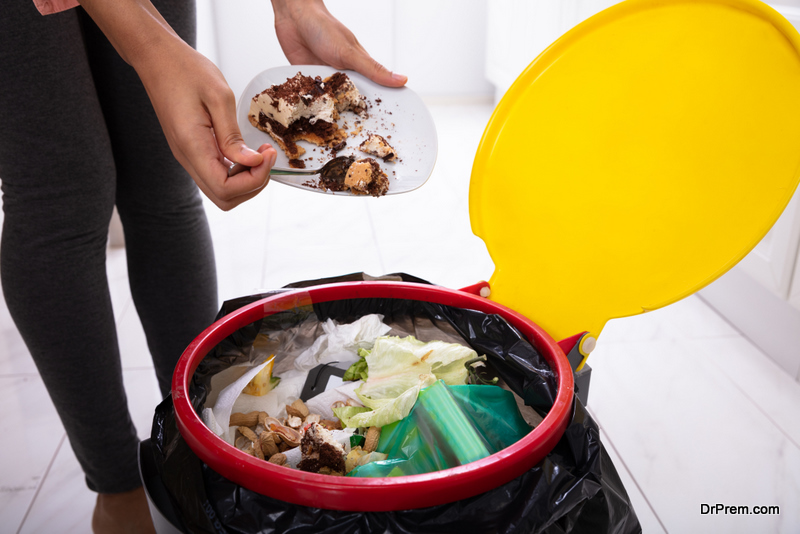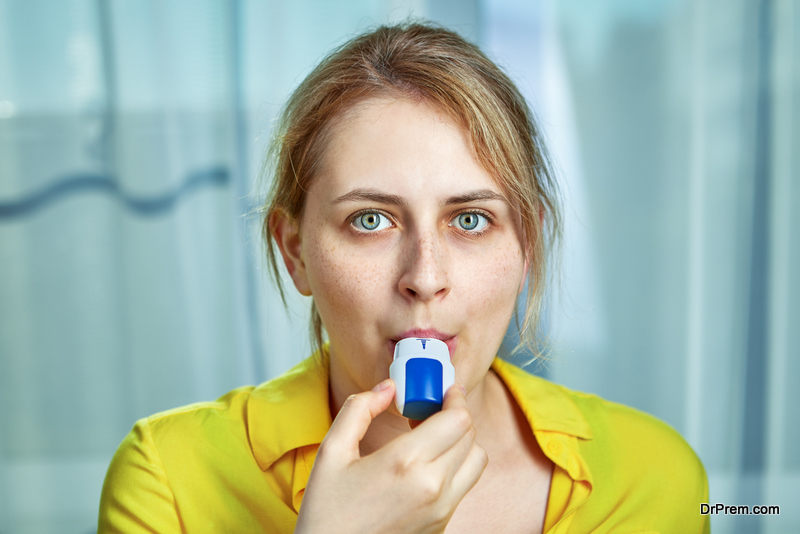Statistics from the ’90s show that Americans spend around 90% of their time staying indoors. Pandemic or no pandemic, this number hasn’t changed much since then. Therefore, you must improve the indoor air quality to ensure that your family’s breathing in a pollutant-free environment. What are some pollutants that muddle your domestic air quality? They include ozone from cleaning products, asbestos from construction materials, and combustion byproducts which you’re now familiar with as carbon monoxide. Then we have lead, mold, and pesticides contaminating the air inside your apartment. So, if you find yourself sneezing insistently or rubbing your eyes frequently, try various eco-friendly methods to combat the allergens responsible.
Techniques to improve indoor air quality
People have become increasingly worried about eradicating air pollutants. But they often consider these toxins to affect only the outdoors settings. These damaging particles contaminate the air inside your living space. Your domestic environment maybe isn’t as fresh as you think. We’ve discussed some indoor sources of household pollution. Some outdoor factors also affect the air inside your house and make it unbreathable. Smoke from chimneys, chemicals in water supplies, and guests who enter the building with outside soil/dust may also contaminate your domestic climate. So, let’s discuss some techniques for making the air inside your home healthier and more breathable:
1. Increase domestic ventilation
 Proper ventilation leads to better indoor air quality. Hence, the first solution involves contacting HVAC service providers to increase/enhance domestic ventilation. A quick Google search can hook you up with some trusted companies. For instance, if you live in Essex, Maryland, search for ‘HVAC contractors in MD‘ and shortlist a repair/installation company with the right experience and equipment. Repeat the same process for any state/city you reside in. Professional services will provide you with maximum ventilation and an adequate heat flow throughout your home. Thus, it’ll keep your house warm during winters and cool during summers.
Proper ventilation leads to better indoor air quality. Hence, the first solution involves contacting HVAC service providers to increase/enhance domestic ventilation. A quick Google search can hook you up with some trusted companies. For instance, if you live in Essex, Maryland, search for ‘HVAC contractors in MD‘ and shortlist a repair/installation company with the right experience and equipment. Repeat the same process for any state/city you reside in. Professional services will provide you with maximum ventilation and an adequate heat flow throughout your home. Thus, it’ll keep your house warm during winters and cool during summers.
2. Clean the house properly
The second solution seems pretty obvious but is often overlooked by homeowners, i.e., cleaning your house. Even if there aren’t any guests arriving at your doorstep, you must maintain your cleaning routine. Mop the floor, vacuum the carpets, and purify every single corner of the house. Also, look for asbestos while sanitizing the apartment. Ensure that vents are dust-free as well while tackling areas where dirt collects. Thus, properly cleaning the house will drastically improve its air quality.
3. Sanitize your pets
 Both humans and animals carry diseases, some of which can’t spread to humans while others affect people. Your domestic animals may have viruses and bacteria that cause diseases transmittable to your family members. Also, air can get trapped in your pet’s fur and contribute to the contamination of your domestic climate. So, clean your pets regularly along with the places where it likes to sit/sleep. This technique can save your children from disease-carrying animals inside the house.
Both humans and animals carry diseases, some of which can’t spread to humans while others affect people. Your domestic animals may have viruses and bacteria that cause diseases transmittable to your family members. Also, air can get trapped in your pet’s fur and contribute to the contamination of your domestic climate. So, clean your pets regularly along with the places where it likes to sit/sleep. This technique can save your children from disease-carrying animals inside the house.
4. Use air purifiers
But sanitizing your friendly animals isn’t enough! You must also get yourself an air purifier to keep the surroundings hygienic. What are some other benefits of using this device? It improves sleep and eliminates dangerous asbestos particles from hurting your respiratory system. Also, it neutralizes repulsive smells while relieving asthma symptoms. You can also order an air purifier online for some $200! Today, 25% of Americans own an air purifier, according to an estimate by Consumer Reports.
5. Beware of your new furniture
 Buying brand-new furniture adds to the charm of your humble abode, but it damages your domestic climate as well. When you purchase a new piece of furniture, it’ll emit VOCs or volatile organic chemicals. In paint, fabrics, and construction material, you can find several VOCs, such as benzene, xylene, and toluene. Hence, keep your new sofa/armchair in the garage for a week to allow as many VOCs to escape as possible. If that isn’t an option, don’t keep the windows shut and let the furniture become non-toxic.
Buying brand-new furniture adds to the charm of your humble abode, but it damages your domestic climate as well. When you purchase a new piece of furniture, it’ll emit VOCs or volatile organic chemicals. In paint, fabrics, and construction material, you can find several VOCs, such as benzene, xylene, and toluene. Hence, keep your new sofa/armchair in the garage for a week to allow as many VOCs to escape as possible. If that isn’t an option, don’t keep the windows shut and let the furniture become non-toxic.
6. Use beeswax candles
We know that some ultrafine particles are harmful to human beings and pose certain health risks after entering our bodies. But burning some plants can help remove these pollutants from the air. It has been observed that burning beeswax candles purifies your surroundings and makes the air more breathable. These candles – when burned – release negative ions. These ions neutralize pollutants by getting attached to them. However, don’t forget that burning candles send soot into your air too.
7. Throw away old food
 When should you consider throwing rotten food away to avoid foul odors? As per FDA, you should throw out all perishable food items seven days after being opened/prepared. Don’t allow leftovers to stay inside your refrigerator for over a week. When food begins to smell, it indicates that the rotten food particles are now diffusing into breathable air. So, don’t be tempted by gluttony and make room for fresh food items in your house. Also, check its expiration date before purchasing a food product.
When should you consider throwing rotten food away to avoid foul odors? As per FDA, you should throw out all perishable food items seven days after being opened/prepared. Don’t allow leftovers to stay inside your refrigerator for over a week. When food begins to smell, it indicates that the rotten food particles are now diffusing into breathable air. So, don’t be tempted by gluttony and make room for fresh food items in your house. Also, check its expiration date before purchasing a food product.
8. Bring plants in your home
Plants don’t just improve your apartment’s aesthetics but also purify the air in it. Even NASA found in 1989 that plants removed cancer-causing VOCs from the air and effectively detoxified the environment. However, enough evidence hasn’t been gathered to prove that plants contribute heavily to improving indoor air quality. But it still doesn’t harm one to place a few plants around one’s home. It’ll help your children get used to more greenery inside the house.
9. Control domestic humidity
 A humid climate leads to mold/mildew growing inside your living space. These toxins contribute to respiratory issues, such as asthma and allergies. For this reason, homeowners must control the humidity inside their houses. There are multiple techniques to reduce humidity levels, including just getting a dehumidifier. You can also try drying your laundry outside, keeping your gutters clean, and fixing pipes if they’re leaking. Furthermore, use your HVAC system efficiently for proper ventilation.
A humid climate leads to mold/mildew growing inside your living space. These toxins contribute to respiratory issues, such as asthma and allergies. For this reason, homeowners must control the humidity inside their houses. There are multiple techniques to reduce humidity levels, including just getting a dehumidifier. You can also try drying your laundry outside, keeping your gutters clean, and fixing pipes if they’re leaking. Furthermore, use your HVAC system efficiently for proper ventilation.
10.Replace caustic cleaning products
In the 21st century, homeowners have started to favor environment-friendly cleaning products for their homes. Using chemical cleaners leads to eye/throat irritations, headaches, and even diseases such as cancer. You don’t wish these toxic VOC-releasing products to affect your children’s health, don’t you? Even if you have to use chemical cleaners, remember to open your windows and allow this harmful air to escape the confines of your living space. Always check the labels on these things.
Conclusion
A survey by the Environment Protection Agency conducted back in the ’80s shows that there are around 2-5 times more pollutants inside than outside your house. So, how to learn if your apartment suffers from poor air quality? Some telling symptoms indicate if your domestic climate has been compromised. Residents often cough/sneeze or have difficulty breathing. They can also experience allergic reactions or undergo skin dryness. Then we have nausea, irritation, and headaches as some common symptoms of indoor pollution. The suggestions mentioned above can help you improve indoor air quality. So, you can sleep better and get rid of that horrible stench that comes with unclean air.
Article Submitted By Community Writer




